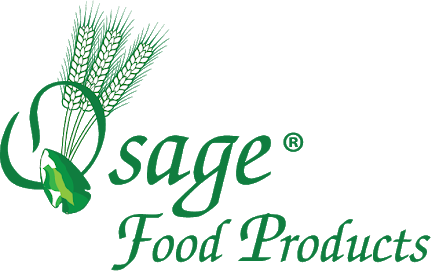As many food producers know, working with powdered materials can present challenges in material handling, processing, and waste reduction. Agglomeration offers the perfect solution that improves food production efficiency while increasing profits.
Agglomeration is a high-tech process that joins particles together to create more surface area. One of the most efficient agglomeration methods to accomplish this is through the “rewet process”. This process introduces liquid to the surface of the powder particles, making the surface tacky and bondable with other particles to create larger granules.
These granules have a higher density than powders, making them easier to handle throughout the production, packaging, and shipping processes and during downstream food production. Their increased surface area also enables better water absorption, improving solubility, dispersion, and miscibility for superior product functionality and an improved consumer experience.
Agglomeration using the rewet process brings food and nutritional product manufacturers numerous cost-effective benefits, including:
- Increased Flowability: Granular products produced through the rewet process provide better flowability than powders. Increased flowability leads to better product consistency, efficient processing, easier handling, reduced equipment downtime, and much more.
- Easier Measurement And Dosing: Precise measurements are crucial to protecting product quality and reducing waste. Agglomerated granules are more flowable than dusty powders, significantly increasing your ability to measure accurately. This benefit also extends to the end-user, who will have a better experience with dosing.
- Cleaner Workspaces: Dusty powders can quickly become airborne by movement through your workspace. Over time, it will cover work areas and production settings, creating a hazardous work environment and laborious cleanup. Agglomerated products are denser than powders, reducing the amount of airborne dust, thus preserving a healthy workplace and maintaining productivity.
- Reduced Production Downtime: The same dusty residue that’s creating an unsafe work environment can also clog up your machinery, possibly stopping production. Since agglomerated products are much denser, the risk of airborne particles getting into the equipment is significantly reduced, cutting down on service calls and potentially extending the life of your machinery.
- Easier Material Handling: Dust issues from non-agglomerated powders can also cause hazards when handling your material for packaging and transportation. Powders can quickly become airborne when moving through conveyor belts, transfer chutes, or other means of transport. Agglomerated particles have a much lower propensity to generate dust, saving more product for your customers and significantly reducing waste.
- Reduced Waste, Bigger Profits: Powder that wasn’t run through the agglomeration process is more than a dusty workplace nuisance – it’s also product loss. Over time, this loss will take a significant chunk out of your profits. By mitigating this loss through agglomeration, you’ll be sending more product to market and protecting your bottom line.
- Better Control Of Particle Characteristics: The agglomeration process offers enhanced control of specific particle characteristics, such as density, size distribution, porosity, moisture content, attrition, and much more. Non-agglomerated powders can’t offer this scalability.
- Efficient Storage: The ability to store powder products efficiently is an ongoing concern for food producers. Powder’s tendency to absorb air moisture and become caked during storage can lead to product loss and the added cost of reprocessing. Agglomerated products can still become caked, but the chances of it are far fewer than with powders. This is because granules have less surface area between particles, reducing places where caking can occur.
- Better Performance Downstream: The enhanced flowability of agglomerated materials make them easier to work with during downstream food production. They will also often perform better under high-heat processing conditions such as in kilns and furnaces.
- Premium Labeling: Consumers familiar with working with dusty powders understand the inconveniences they present. Agglomeration allows you to label the product as dust-free or more soluble, giving the perception of a high-value product that you can sell at a higher price point.
- Improved End-User Experience: Your customers will notice the benefits of using agglomerated granules over powders, including easier solubility, product appearance, enhanced mouthfeel, and consistent performance. Positive user experiences lead to repeat purchases and product advocacy, resulting in more revenue for your company.
At OFP Ingredients, we believe that using the rewet system gives our customers higher capacity and more efficient agglomeration, which yields consistently high-quality results. Rewetting also allows us elevated control of the end product’s properties.
Read More: Our Products
We process a diverse range of powders in our Peebles agglomeration system, such as whey and milk proteins, non-fat milk, maltodextrins, cocoa powders, plant proteins, and much more. Our system uses minimal heat during processing, preserving the quality and integrity of the end product.
If you’re interested in learning how agglomeration can enhance your food and nutritional products, contact OFP Ingredients for a quick consultation. You can also request a free sample for your inspection and to experience the numerous benefits agglomeration can bring.




